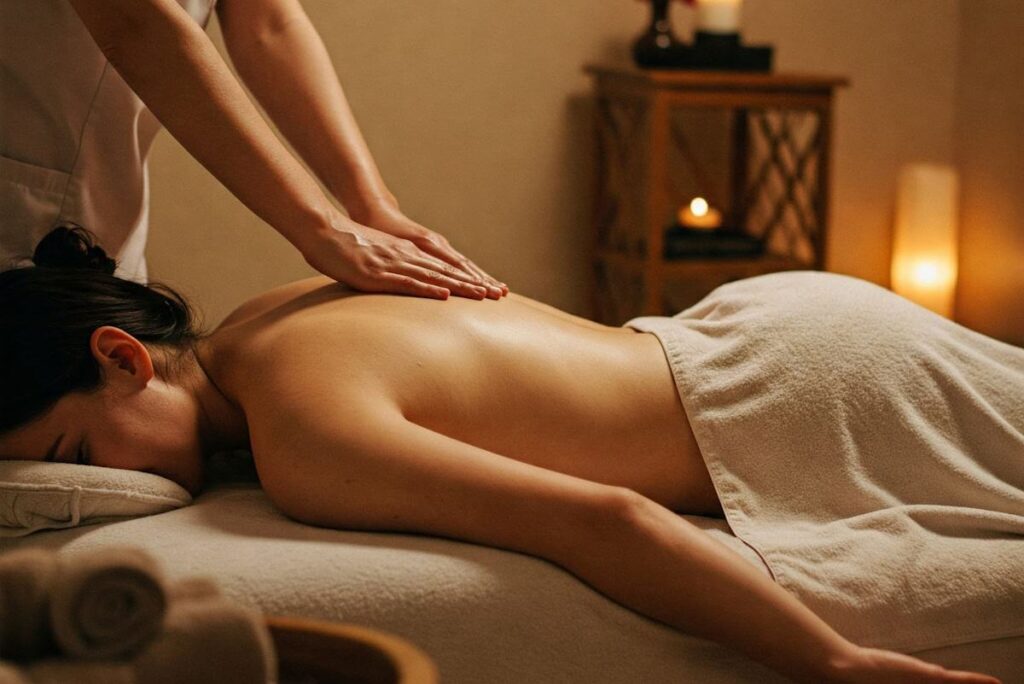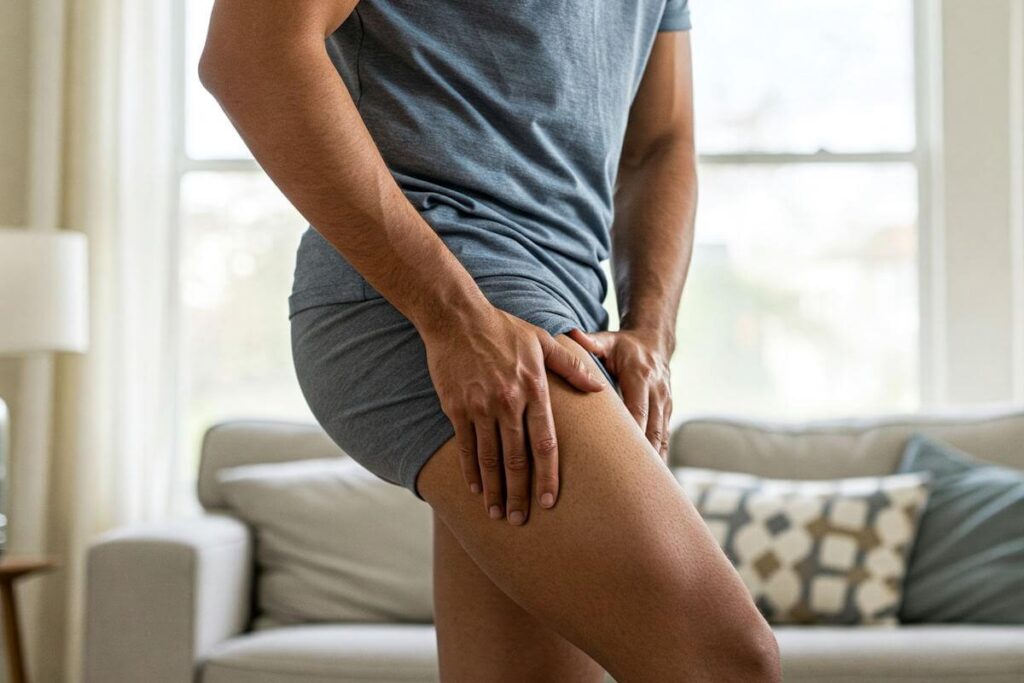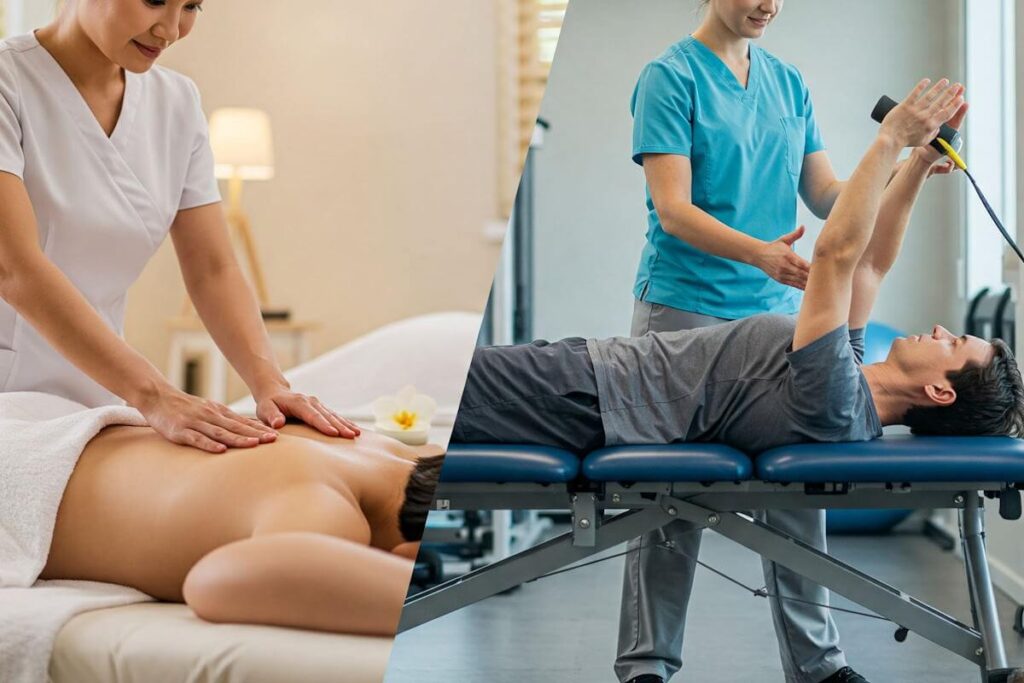Understanding Stress and Anxiety
Stress and anxiety are common psychological responses to perceived threats or challenges in one’s environment. Biologically, stress activates the body’s “fight or flight” response, mediated by the release of hormones like cortisol and adrenaline. This surge prepares the body to respond to immediate danger, leading to increased heart rate, heightened awareness, and other physiological changes. However, when stress becomes chronic, these reactions can lead to detrimental health problems, including anxiety disorders, cardiovascular issues, and weakened immune function.
Anxiety, on the other hand, is characterized by excessive worry or fear about future events. It often arises from an imbalance in the brain’s chemistry, particularly involving neurotransmitters such as serotonin and gamma-aminobutyric acid (GABA). Individuals experiencing anxiety might feel persistent restlessness, fatigue, or difficulty concentrating, which can impair daily functioning and overall quality of life. Common triggers for anxiety include stressful life events, financial concerns, interpersonal conflicts, or even health issues, indicating the complex nature of these emotional responses.
Both stress and anxiety influence individuals not only on a psychological level but also physically. Symptoms like muscle tension, headaches, digestive problems, and sleep disturbances are frequently reported, illustrating the interconnectedness of mental and physical health. Furthermore, the experience of stress and anxiety can vary significantly among individuals due to factors such as personality traits, coping mechanisms, and past experiences. Identifying and understanding these triggers and symptoms is crucial for effective management, helping individuals adopt appropriate strategies to mitigate their effects.
As we explore the potential benefits of massage therapy, it becomes evident that understanding the underlying mechanisms of stress and anxiety will shed light on how this holistic approach can effectively alleviate symptoms, foster relaxation, and enhance overall well-being.
The Science of Massage Therapy
Massage therapy has garnered considerable attention in recent years as a beneficial method of relieving stress and anxiety. The underlying science reveals various physiological effects that massage therapy exerts on the body, enhancing both psychological and physical well-being. One of the key mechanisms through which massage works is by promoting the release of endorphins—natural chemicals produced by the body that act as pain relievers and mood enhancers. The elevation of endorphin levels contributes significantly to the feeling of relaxation experienced after a session, creating a sense of calm that counteracts stress and anxiety.
In addition to boosting endorphins, massage therapy is known to significantly reduce cortisol levels, a hormone closely associated with stress. Elevated cortisol can lead to numerous health problems, and massage therapy provides a non-invasive solution by fostering a state of relaxation that facilitates the lowering of stress hormones. This reduction in cortisol not only helps alleviate anxiety but also plays a role in enhancing overall health, promoting better sleep patterns, and improving mood stability.
Improved circulation is another crucial component of massage therapy. By manipulating soft tissues, various techniques such as Swedish massage, deep tissue massage, and aromatherapy are utilized to enhance blood flow. Increased circulation can deliver more oxygen and nutrients to muscle tissue while simultaneously assisting in the removal of metabolic waste. This physiological improvement serves not just to relieve muscle tension but also to foster a deeper sense of physical and mental relaxation.
The techniques employed in massage therapy vary widely, with each tailored to address specific needs. From gentle strokes to deep, targeted pressure, these methods work harmoniously to provide stress relief. Overall, the science behind massage therapy highlights its effectiveness in combating stress and anxiety through these physiological processes, making it a valuable treatment option for those seeking holistic approaches to wellness.
Different Types of Massage for Relaxation
The practice of massage therapy encompasses a variety of techniques, each designed to address specific stress-related conditions. Among the most popular is the Swedish massage, known for its gentle and soothing strokes. This technique employs long gliding movements, kneading, and rhythmic tapping to promote overall relaxation and increase circulation. Particularly effective for individuals seeking relief from mild anxiety and tension, Swedish massage helps in calming the nervous system, allowing for a peaceful state of mind.
In contrast, deep tissue massage targets the deeper layers of muscle and connective tissue. It utilizes slower strokes and more intense pressure to alleviate chronic muscle tension and pain. This method proves highly beneficial for individuals with profound stress that manifests physically, such as tightness in the neck or back. By focusing on specific areas of discomfort, deep tissue massage promotes the release of accumulated stress, ultimately enhancing emotional well-being and mental clarity.
Aromatherapy massage combines the benefits of traditional massage techniques with therapeutic essential oils. In this method, fragrant oils are used to create a soothing environment while enhancing the physical massage experience. Lavender oil, for example, is renowned for its calming properties, making it a suitable choice for individuals looking to mitigate stress and anxiety. This holistic approach to massage not only addresses physical tension but also invigorates the senses, contributing to a comprehensive relaxation experience.
Ultimately, selecting the right type of massage depends on individual preferences and specific stress-related challenges. Whether one seeks the gentle embrace of Swedish massage, the targeted approach of deep tissue therapy, or the aromatic experience of aromatherapy, each technique offers unique benefits that can significantly enhance relaxation and alleviate stress and anxiety.
The Connection Between Mind and Body
The intricate relationship between the mind and body has been a subject of interest in both scientific and holistic practices. It is well-established that emotional and psychological stressors can have tangible effects on physical health. When an individual experiences anxiety, the body often responds with tension, muscle tightness, and other physiological symptoms. These manifestations not only create discomfort but can also exacerbate mental distress, leading to a cycle that is difficult to break. In recognizing this cycle, we can see how interventions like massage therapy serve to bridge the mind-body gap.
Massage therapy encourages physical relaxation by alleviating muscle tension, improving circulation, and stimulating the release of endorphins – the body’s natural painkillers. This physical relaxation is crucial in reducing the symptoms of stress and anxiety. As therapists use various techniques to manipulate soft tissues, clients often report a decrease in physical discomfort and an enhanced sense of well-being. This transformation not only addresses the immediate physical symptoms of stress but can lead to improved mental clarity and reduced anxiety levels as well.
Moreover, incorporating mindfulness practices alongside massage therapy can further enhance these benefits. Mindfulness promotes an acute awareness of the present moment, encouraging individuals to observe their thoughts and feelings without judgment. This practice can be seamlessly integrated into a massage session, allowing clients to engage more deeply in the experience. By focusing on bodily sensations, clients can cultivate a state of relaxation that enhances the effects of the massage. Overall, by fostering a harmonious connection between the mind and body, massage therapy offers a holistic approach to managing stress and anxiety, paving the way for a more balanced and healthy lifestyle.
Case Studies and Personal Testimonials
Massage therapy has garnered attention for its ability to alleviate stress and anxiety in various individuals. Numerous case studies highlight the transformative effects that regular massage sessions can have on well-being. For instance, one case study featured a corporate executive who struggled with high levels of stress from work-related pressures. After incorporating monthly massage therapy into her routine, she reported a significant reduction in anxiety levels and an increase in productivity at work. This individual emphasized that the sessions provided a sanctuary for her mind, allowing her to regain focus and clarity during challenging times.
Another compelling testimonial comes from a college student who faced the pressures of academic requirements and social expectations. Feeling overwhelmed, she sought massage therapy as a coping mechanism. After a series of massages, she expressed a newfound sense of calmness and improved sleep quality. The therapy not only eased her muscle tension but also contributed to a more positive outlook on her studies and personal life. This case exemplifies how massage can serve as a vital tool for managing stress in high-pressure environments.
Additionally, practitioners regularly collect testimonials from clients who have found healing through massage therapy. One common theme among these accounts is the enhanced emotional stability experienced post-massage. Many individuals reported feeling lighter, both physically and emotionally, after their sessions, citing fewer panic attacks and a greater sense of overall wellness. These personal stories emphasize the holistic nature of massage therapy, addressing not just physical tension but also the emotional burdens that contribute to stress and anxiety.
Through these real-life examples, it is evident that incorporating massage therapy into one’s self-care routine can lead to substantial improvements in daily life. The positive impacts on stress levels and emotional health underscore the importance of such therapies in our fast-paced, modern world.
Incorporating Massage Into Your Routine
Integrating massage into your self-care routine can significantly enhance your overall well-being by alleviating stress and anxiety. Establishing a regular schedule for massage sessions is crucial. Many experts recommend aiming for at least one professional massage per month. However, individuals experiencing higher levels of stress may benefit from more frequent sessions, such as bi-weekly or weekly appointments. This helps to provide a consistent reprieve from daily tensions and fosters a deep sense of relaxation.
When seeking a qualified massage therapist, it is important to conduct thorough research. Look for licensed professionals who are trained in various massage modalities. Personal recommendations from friends or family can also be a valuable resource. Online reviews and testimonials can provide further insights into a therapist’s expertise and style. Ensuring compatibility with your therapist is essential; this can be confirmed through initial consultations or trial sessions.
Beyond professional treatments, self-massage techniques and creating the right ambiance at home can greatly enhance your massage experience. Designate a calm and quiet space in your home where you can dedicate time to self-care. Use soft lighting and soothing music to cultivate a serene atmosphere. You may also incorporate essential oils or aromatherapy candles to engage the senses further.
Self-massage can be intuitive and beneficial. Techniques such as pressing and kneading muscles with your hands or using tools like foam rollers can help release tension and promote relaxation. Regular practice of these techniques can complement professional massages and support your mental and physical health. By committing to both professional sessions and self-care practices, you can create a holistic approach to managing stress and anxiety through the healing power of massage.
Challenges and Considerations
While massage therapy offers numerous benefits for relieving stress and anxiety, there are several challenges and considerations to keep in mind before starting treatment. One of the primary concerns might be the cost associated with professional massage sessions. Depending on the type of therapy and the therapist’s experience level, prices can vary significantly. It is essential to understand that while some wellness practices may demand a higher financial investment, the potential health benefits could justify the expense.
Another vital factor is finding the right therapist. Each massage therapist has a unique approach and specialization, which can greatly influence the overall experience and effectiveness of the therapy. Individuals seeking massage therapy should look for qualified and licensed practitioners, taking into account their specific needs and preferences. Seeking recommendations from friends or reading reviews can be helpful in making an informed choice. Additionally, many therapists offer discovery sessions or consultations, allowing clients to assess compatibility before committing to a series of treatments.
Personal comfort is another important consideration when opting for massage therapy. It is crucial for clients to feel safe and relaxed in the therapeutic environment. This includes factors such as the therapist’s demeanor, the treatment setting, and the chosen massage techniques. Individuals who are uncomfortable with physical touch or have specific medical conditions should communicate openly with their therapists. In some instances, massage therapy may not be suitable at all, such as for those with certain skin conditions, infections, or during pregnancy without proper guidance.
Before starting any massage therapy, it is advisable to consult a healthcare provider to ensure it aligns with an individual’s overall health plan. This consultation can help identify any contraindications or specific nuances to consider, ensuring a safe and beneficial experience.
Combining Massage with Other Stress Relief Techniques
Massage therapy is often recognized for its effectiveness in alleviating stress and anxiety, but its benefits can be significantly enhanced when combined with other stress relief techniques. A holistic approach to stress management not only addresses physical tension but also incorporates mental and emotional well-being. By integrating practices such as yoga, meditation, breathing exercises, and physical exercise, individuals can create a more comprehensive framework to combat stress and promote overall health.
Yoga, known for its focus on mindful breathing and body awareness, complements massage therapy exceptionally well. The physical postures in yoga facilitate flexibility and strength, while the meditative aspect helps calm the mind. When combined with massage therapy, individuals can experience deeper relaxation, allowing for more effective release of tension stored in muscles. Additionally, the integration of stretching and movement through yoga enhances blood circulation, further supporting the benefits gained from massage.
Meditation is another powerful technique that can be synergistically paired with massage. Practicing mindfulness or guided meditation before or after a massage session can enhance the relaxation response, enabling practitioners to access a greater state of tranquility. Incorporating deep breathing exercises further amplifies this effect, as controlled breathing has been shown to activate the parasympathetic nervous system, reducing stress levels and fostering a sense of peace.
Engaging in physical exercise also plays a pivotal role in stress relief. Regular workouts release endorphins, promoting an enhanced mood, and can make the body more receptive to the calming effects of massage. Whether through aerobic activities or strength training, combining these physical exertions with massage can create a balanced routine that supports mental health and helps mitigate the effects of anxiety and stress.
In summary, combining massage therapy with complementary techniques such as yoga, meditation, breathing exercises, and physical exercise creates a holistic approach to stress relief, enhancing the efficacy of each method and facilitating a comprehensive path to improved mental health and well-being.
Conclusion: Embracing Massage as a Stress Relief Tool
In the pursuit of physical and mental well-being, the significance of massage therapy has emerged as a beacon of hope for many seeking relief from stress and anxiety. Throughout this blog post, we have discussed the numerous benefits stemming from the practice of massage, including its ability to lower cortisol levels, decrease muscular tension, and promote relaxation. These elements contribute to enhancing mental clarity and emotional stability, making massage a powerful tool in managing everyday stressors.
As individuals navigate the complexities of modern life, the impact of chronic stress on mental health cannot be overlooked. Massage therapy serves not only as a luxurious indulgence but as a legitimate means of self-care that can play a crucial role in maintaining mental wellness. The hands-on approach of massage fosters a deeper connection with the body, allowing for a greater awareness of physical and emotional states. This heightened awareness can empower individuals to address their stressors more effectively.
Furthermore, the integration of massage into wellness routines encourages a proactive approach to mental health. By prioritizing self-care, individuals can cultivate resilience against stressors and anxiety triggers. Whether opting for a professional session or exploring self-massage techniques, incorporating massage into one’s life addresses not only immediate concerns but also promotes long-term emotional stability and health.
In light of these insights, it is clear that the benefits of massage therapy extend beyond mere relaxation. Embracing this practice as a valuable tool for stress relief not only enhances personal well-being but also contributes to a healthier society as a whole. We encourage readers to explore the various forms of massage available and consider how they might integrate this therapeutic practice into their lives for greater mental health and overall wellness.




